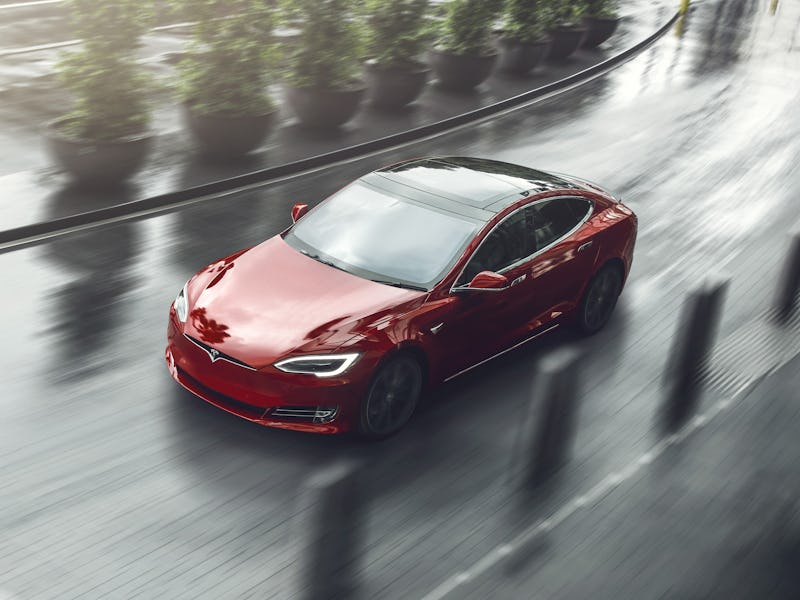Tesla cars haven’t cracked 400 miles for one really bizarre reason
Tesla's premium sedan is advertised with a range of 391 miles, but Musk says there's a good reason for that.

The Tesla Model S can drive for 400 miles between charges, but you wouldn't know it from Tesla's website.
That's according to CEO Elon Musk, who claimed in the company's first-quarter 2020 earnings call on Wednesday that the company's premium sedan has a higher real-world range than expected. The website lists the vehicle as offering 391 miles between charges, an impressive figure that's enough to cover a trip from Los Angeles to San Francisco on a single charge.
But Musk claimed during the call that Tesla could have broken the 400 barrier, had it not been for an opened door during the Environmental Protection Agency's test:
On other technology fronts, we increased the range of Model S and X yet again, this time to 391 miles for Model S and 351 miles for Model X. And it should be said that the real Model S range is 400 miles, but when we did the last EPA test, unfortunately, the EPA left the car door open and the keys in the car, and they did this overnight. So the car actually went into waiting for driver mode and lost two percent of its range. And as a result, it had a 391 test.
Musk then claimed the team would re-submit the car for testing once the centers re-open.
As soon as the EPA reopens for testing we will redo the test, and we're actually really confident that we will achieve a 400 mile, or greater, range with the Model S. But to be clear, the Model S for the past two months...the true range of the Model S for the past two months has been 400 miles.
Inverse has contacted the Environmental Protection Agency for comment and will update this article with any response.
Tesla Model S.
It's the latest in a series of statements about the road the Model S is taking as it approaches the 400-mile mark. In the January 2020 call, Musk declared the car was "rapidly approaching" this figure, stating that the cars "actually have more range than we are currently stating on the website." In February, after the EPA updated the range to past 390 miles, Musk wrote on Twitter that "all S/X cars made in recent months have actually been above stated EPA range," and this extra range "will be unlocked soon for free via software update."
The opened car door is a rather odd story, but one that fits with what we know about EPA tests. MyEV explained in 2018 that the agency tests cars by placing them on essentially a giant treadmill called a dynamometer. A driver runs the car through city and highway driving scenarios to build up a picture of its range. For the highway tests, for example, the car races at high speeds with few stops.
The EPA starts the test by parking the car overnight with a full battery. It then runs the dynamometer tests, before charging the battery to full again. The amount of energy needed to charge it to full is divided by the number of miles it drove to calculate the miles-per-gallon equivalent.
With that in mind, it's clear how the testers could make such a mistake during the overnight phase.
The Inverse analysis – Tesla is solving one of the key concerns that people have about electric cars: range. A Volvo survey in February 2019 showed that 58 percent of drivers without an electric car are concerned about reaching a charging point. Tesla is taking steps to fix this, like the third-generation superchargers that top-up batteries faster than ever. The big changes may come from the Cybertruck and next-gen Roadster, expected to launch next year, both with ranges exceeding 500 miles.
Tesla may be disputing the 400-mile mark today, but it could be about to exceed that dramatically.